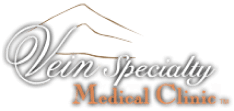Overview
Spider veins are tiny, visible veins that often appear on the legs or face due to factors such as age, genetics, or prolonged periods of sitting or standing. While usually harmless, they can be uncomfortable or unsightly. Simple habits like staying active, maintaining a healthy weight, and wearing compression stockings can help prevent them. If they bother you, treatments such as sclerotherapy or laser treatment can help reduce their appearance.
What Are Spider Veins?
Spider veins, also known as telangiectasias, are small veins that twist and turn, typically appearing on the legs, thighs, ankles, or face. These thin blood vessels are closer to the skin’s surface and appear in clusters that resemble spider webs or tree branches. They are more common in women than men and often become more visible with age. While they are usually considered cosmetic issues, they may signal poor circulation or valve dysfunction, especially when accompanied by pain or swelling. Unlike varicose veins, which are larger and bulge above the skin, spider veins are flat and painless in many cases. However, that doesn’t mean they should be ignored—early diagnosis and care can prevent complications and improve comfort.
What Causes Spider Veins?
Spider veins develop when the tiny valves inside veins become weak or damaged, leading to the pooling of blood and increased pressure. Over time, this pressure causes the veins to swell and become visible under the skin. The most common causes include:
- Weak vein valves that fail to push blood upward, allowing it to flow backward and accumulate.
- Pregnancy and hormonal changes dilate blood vessels and increase blood volume, placing extra stress on the veins.
- Long periods of sitting or standing, increase pressure in the legs and reduce circulation.
- Excessive sun exposure, especially on the face, which can break down collagen and damage capillaries.
- Genetics, with a strong family history, raises your risk significantly.
- Obesity, as extra body weight puts continuous pressure on the lower limbs.
- Age, since aging naturally weakens vein walls and valves.
- Trauma or injury to the skin, which may lead to localized spider veins, especially after surgery, bruises, or broken blood vessels.
Understanding these risk factors is crucial for prevention and timely management.
What Are the Symptoms of Spider Veins?
For many, the first and only sign of spider veins is their appearance—colored lines that branch out across the skin. However, symptoms can vary, especially if the condition worsens or is tied to underlying vein problems.
Common symptoms include visible blue, purple, or red lines, particularly on the lower legs and face. A dull, aching pain or heaviness may develop in the legs, often worsening by evening or after long hours of standing. Many people report burning, itching, or throbbing sensations around the affected veins.
How Are Spider Veins Diagnosed?
Diagnosing spider veins typically starts with a consultation at a vein clinic. The physician conducts a detailed physical exam and reviews your symptoms, lifestyle habits, and medical history.
If necessary, they may use duplex ultrasound, a painless imaging test that uses sound waves to create images of blood flow. This helps assess whether spider veins are isolated or part of a larger issue such as venous insufficiency or deep vein thrombosis (DVT). Detecting these issues early ensures proper treatment and reduces long-term complications.
How to Stop Spider Veins from Growing?
Preventing new spider veins or stopping existing ones from worsening requires daily habits that improve blood circulation and reduce pressure on your veins. Small changes can make a significant difference over time:
- Exercise regularly to encourage healthy blood flow and improve muscle tone in the legs.
- Maintain a healthy weight to reduce excess pressure on your veins, especially in the lower body.
- Avoid prolonged sitting or standing—move frequently and elevate your legs when resting.
- Wear loose-fitting clothes, particularly around the waist and thighs, to avoid restricting circulation.
- Use sunscreen, especially on the face, to prevent UV damage to delicate blood vessels.
- Limit alcohol intake, which can dilate vessels and worsen their visibility.
- Wear compression stockings if recommended by your provider—they help support vein function and reduce swelling.
These proactive steps not only help prevent spider veins but can also ease discomfort and support better overall vein health.
What Are the Treatment Options for Spider Veins?
When lifestyle changes are not enough, professional treatments can help reduce or eliminate spider veins. Two widely used methods are:
Sclerotherapy: Sclerotherapy is the most common procedure for spider veins. A saline or chemical solution is injected into the targeted vein, causing it to scar and collapse. Over time, the body absorbs the closed vein, making it fade from view. Most sessions take under 30 minutes, and patients can return to normal activities the same day.
Laser treatment: Laser treatment is a non-invasive alternative ideal for small or facial spider veins.
When to Worry About Spider Veins?
While spider veins are usually benign, certain warning signs should not be ignored. Seek medical advice if your veins begin to appear rapidly, change in color or texture, or are accompanied by swelling, pain, or skin ulceration. Leg pain or heaviness that interferes with your daily routine could signal underlying venous insufficiency. Discoloration, skin thickening, or the presence of open sores near the veins may point to chronic vascular problems. Symptoms such as warmth, redness, or tenderness in the leg could indicate a blood clot, requiring immediate attention.
Tired of dealing with spider veins? Schedule a consultation with Vein Specialty Medical Clinic and explore safe, effective treatments tailored to your needs.

